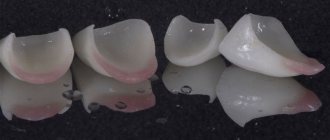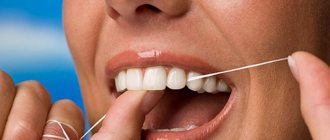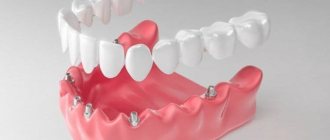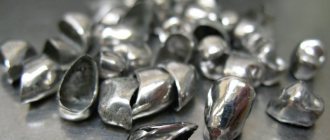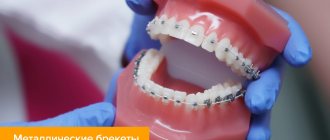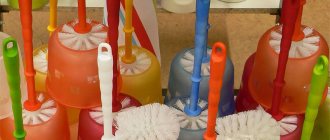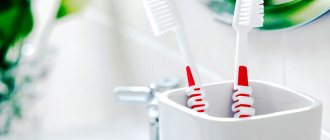General information about microbes
These tiny organisms get their name from the abbreviation “microscopic object.” It was proposed back in 1878 by the French Emile Littre and Charles Sedilot.
Billions of such small organisms inhabit the air, the earth's surface and water everywhere. They are also found in human, animal and plant organisms. The first time microbes were seen was by the Dutch optician Antonio Leeuwenhoek, looking at a drop of ordinary water through a magnifying glass.
Microbes are the most ancient inhabitants of the planet. Their earthly history is more than 3.5 billion years. And for the first billion years they were the only living organisms on Earth. In the human body, the ratio of microbes and our own cells is 50/50. Most microorganisms benefit the body.
The 2 largest groups of microbes are nuclear-free prokaryotes and eukaryotes, which contain a nucleus in their cells.
The total number of microbes inhabiting the Earth and their ubiquitous distribution make them the most important link in maintaining the balance of the earth's biosphere.
Microbes vary in shape:
| Microbes | Form |
| Staphylococcus or streptococcus | Round cocci |
| Spirochetes | Spiral-shaped organisms |
| bacilli | Similar to sticks |
| Bifidobacteria | They live in fermented milk products and look like a two-toothed saw. |
There are also multifaceted microbes in the shape of stars, triangles and polyhedra. Some microbes are immobile, but mostly these microorganisms have flagella and are capable of movement.
The following classification:
- bacteria;
- the simplest single-celled organisms, for example amoebas;
- microscopic fungi.
Bacteria in the mouth
The oral cavity is the most bacteria-populated area of the body. This is due to the fact that this place has suitable conditions for the development of microbes: it is warm, constant humidity, and acidity and oxygen saturation are the best for microorganisms. There is a lot in the mouth and all kinds of nutrients.
About 30 species of bacteria live here permanently. Interestingly, the species composition of bacteria in humans does not change, but the number of each specific type of microbe may change throughout life. The basis of the microflora is bacteria, of which 90% can live without oxygen.
Most bacteria are found on the back of the tongue. Here the smallest plaque is formed, in 1 g of which almost 300 billion bacteria can be found. The second favorite place to live for most bacteria is the surface of the teeth. Microbes under a microscope (photo of streptococci that cause sore throat) allow you to see their structure.
Those microbes that are constantly in the oral cavity cause periodontitis and caries. Today, 95% of people suffer from caries.
The following bacteria are constantly found in the human mouth:
- Veillonella alkasenses. This is a microbe that leads to the development of infectious diseases.
- Candida mushrooms. More than 100 species of such fungi can be pathogenic or normal, not causing disease.
- Leptothrix bacteria , very similar to curved rods with sharp or round edges. They can be found in the cervical area of the teeth. These bacteria form tartar and cause bad breath.
- Corynebacteria, leading to the development of purulent inflammation in diseases of the gums or teeth.
- Lactobacillus casei. These microorganisms produce fatty acids. They are the ones who create bad breath.
- Treponema dental. This bacterium takes part in the destruction of gums and is directly dependent on oral hygiene.
- Solobacteria Moore cause a severe putrid odor in the mouth: they produce hydrogen sulfide, which evaporates very quickly and enters the exhaled air.
- Streptococci, forming chains of spherical anaerobic bacteria.
- Staphylococci that can live in the air and cause purulent infections. They can lead to pneumonia, severe pneumonia and general sepsis.
Non-infectious nail diseases: color changes (onychodyschromia)
Primary changes in nail color
Associated with changes in the color of the nail plate. Possible in connection with taking medications or certain products. For example, the antimalarial drug agebrin can cause a bluish or yellow-green color, while resokhin can cause a bluish-black color. If you overeat carrots, your nails may turn yellow. Also, using highly pigmented nail polishes can lead to staining of the nail plate.
Secondary changes in nail color
Occur in the nail bed . The red-violet color of the nail is observed in people with heart disease, yellow - with liver disease, bluish - with a lack of oxygen. White nails are observed with diseases of the adrenal glands, milky white - with cirrhosis of the liver, pale pink - with low hemoglobin content in the blood.
Leukonychia
A fairly common condition of nails in the form of white spots, dots or stripes on the plates. They occur due to air bubbles between the layers of the nail, bruises or any other injury to the nail. And also due to insufficient keratinization of a separate group of onychoblasts, which can be caused by both injury and internal causes. Also, a deficiency of iodine, zinc, and copper can lead to the appearance of white spots. Leukonychia cannot be corrected, but gradually the affected areas are eliminated on their own due to the natural growth of the nail.
Hemorrhage
When a nail is injured, hemorrhages occur in the nail bed at the site of rupture of blood vessels. In this case, a dark purple, blue, and sometimes black spot appears under the nail plate, which moves forward as the nail grows until it disappears. This phenomenon often occurs after bruises. If the effusion is extensive, the nail may fall off; it is not recommended to apply gel polish.
Melanonychia
It looks like a black stripe under or inside the nail plate that runs from the base of the nail to the free edge. In some cases, this strip can cover the entire nail plate. It appears due to the deposition of melanin in the nails. Typically this occurs within the base of the matrix bed. When cells form the matrix of the nail plate, melanocytes stain it with melanin. As the nail plate grows towards the free edge, a dark stripe of melanin becomes visible. This condition affects many people with dark skin. It affects almost 100% of African Americans over 50 years of age and approximately 15 - 20% of Japanese. In people of Caucasian nationality, cases of melanonychia are extremely rare. If melanonychia is observed, malignant melanoma may be present. Manicure services can be provided to clients with melanonychia.
Streptococci and staphylococci
The following is a description of the most numerous bacteria that inhabit the human oral cavity and skin.
Streptococci in the mouth
The very first of the bacteria that enter the baby’s oral cavity as the child moves through the birth canal. To date, scientists have identified 17 species of streptococci containing the C-antigen and streptococci lacking this antigen. It is microbes without such an antigen that cause caries. Such streptococci are found in the saliva and in the gum pockets of all people without exception.
Streptococci can grow rapidly: this requires a temperature of 37 degrees and glucose with carbohydrates. Therefore, during a sore throat, giving sweets to sick children is not recommended.
Streptococci on the skin
These microorganisms enter human skin in several ways:
- With inhaled air or dust particles.
- Upon contact with contaminated objects: children's toys, bus handrails, banknotes, books, other people's clothing.
- When shaking hands, touching.
- During medical procedures performed with non-sterile instruments.
- From soil or unwashed fruit or when eating with dirty hands.
It is easier for infections to gain a foothold in the body if it is weakened. This happens, for example, in the following cases:
- The child’s defenses have not yet been formed, the immunity is weak from birth or weakened for some external reasons.
- The acid-base balance of the skin is greatly changed, which is normally 5.2 - 5.5 units.
- There are hormonal imbalances in the body: it is hormones that are responsible for the normal course of metabolic processes and cell life.
- The skin is damaged by wounds, abrasions, sunburn, and insect bites.
Streptococcus causes 2 serious health problems: erysipelas and streptoderma. Both of these diseases can lead to blood poisoning and death. Streptoderma has 3 types: superficial, ulcerative and deep.
Staphylococcus in the mouth
These elongated bacteria are the second most numerous inhabitants of the oral cavity. In the microscope photo, their clusters resemble a bunch of grapes. The favorite place for such bacteria to accumulate is the area at the base of the gums and plaque on the teeth. Such microorganisms are capable of multiplying at temperatures from 7 to 46 degrees. But 35-39 degrees Celsius is most suitable for them.
In a simple environment, the population of staphylococci grows very quickly. When breaking down carbohydrates, they produce acid. They process staphylococci and proteins. The result of such processing is hydrogen sulfide. Staphylococci lead to the rapid development of dental plaque.
Staphylococcus on the skin
Such bacteria live on the skin and mucous membranes of living beings, on food, and household items. They cause illness only when the human body is weakened and does not find the strength to resist microbes. The ways in which staphylococcus spreads are standard: through the air or through direct contact with the patient’s skin and objects that contain these microbes.
Photo of staphylococcus microbe under a microscope
Contact with staphylococcus on human skin is always painful. Swelling, suppuration, pain and redness of the skin develop at the site of infection. The main indicator is all kinds of rashes on the skin.
This rash may look like this:
- abscesses;
- large red spots;
- blisters with fluid inside;
- inflammation of the nail phalanges;
- acne;
On the face, Staphylococcus aureus causes a huge number of acne. When such skin inflammations appear, they look like bright red, painful bumps. After a short time, white pus appears in the center of the acne. Even later, such an abscess bursts, and in its place a small pit-scar remains. On the hands, staphylococci most often infect the nail phalanges.
Signs of the disease are:
- suppuration at the site of infection;
- swelling and swelling of the skin;
- severe throbbing pain;
- change in color of the skin and nail plate.
Staphylococcus can form on any part of the body, but in most cases the back, chest and abdomen are affected. Basically, these are the same acne with pus in the center, but there is also a more severe form: boils.
In common parlance they are called boils. In the center of the boil there is a long purulent rod. This rod goes into the deep layers of the skin. Boils most often occur at the site of sebaceous, sweat or hair glands. Another form of staphylococcal disease is erysipelas.
It looks like this:
- at the site of inflammation, swelling begins and body temperature rises;
- a large red spot appears on the skin;
- sometimes transparent blisters appear filled with purulent mass;
- many small pinpoint hemorrhages appear.
What are the stages of dental caries in children?
Tooth decay begins gradually, and with regular examination, parents and the dentist can catch the right moment in time and begin treatment.
| Initial stage Specks appear on the enamel, which differ in color from the rest of the tooth, and over time they darken. | Superficial caries The tooth decay is still minor, but the child is already beginning to react to hot and cold. | Average caries A carious cavity appears at the site of enamel destruction; the tooth reacts very painfully to the temperature of food and drinks. | Deep caries The last stage is when not only the enamel is destroyed, but also the tooth tissue itself. If treatment measures are not taken, then inflammation of the pulp will gradually begin, and the tooth will have to be removed. |
It is better not to delay the examination, because caries in a child can develop quite quickly. The further you go, the more uncomfortable and worrying your first visit to the doctor will be.
Fungi on the skin
On the body, fungal infections can develop anywhere: on the head, feet, buttocks or palms.
The most common forms are:
- Dermatophytosis: damage to the deep layers of the skin, which is caused by both yeast and mold fungi.
The most common fungal disease. This infection triggers an inflammatory process and leads to the formation of pink or red spots or plaques. The size of such plaques is very diverse. Fungi that cause dermatophytosis are permanent residents of hair and skin. They are able to perfectly absorb and assimilate keratin from hair and nails. - Keratomycosis: a disease that affects the top layer of skin. Symptoms of the disease are small, hard nodules on the skin that are filled with pus. The forms of the disease vary and include pityriasis versicolor, axillary trichomycosis and erythrasma.
- Deep mycosis: the disease affects the subcutaneous tissue, muscles, joints and bones, mucous membrane, tissues of internal organs and parts of the nervous system. With such a lesion, warts and deep fistulas appear on the skin.
- Candidiasis: The infection is caused by yeast. The most common sites of lesions on the body are in the groin area, in the armpits and under the female breast.
The manifestation of the disease depends on the location of the lesion and the type of fungus.
Candida and dermatophytes cause itching, discoloration of the skin to red-bluish, peeling of infected areas, dandruff and dry hair, and discoloration of nails.
With mycosis of the foot, in addition to peeling of the skin, blisters up to 2 mm in diameter appear, filled with liquid. These bubbles collect between the toes. The smell that appears when the fungus decays also causes trouble for the patient. Often a person gets such diseases in a sauna or in the summer, when wearing tight shoes for many hours.
When fungi get on the skin of the face, they first attack dead epithelial cells. If treatment is not carried out, the skin begins to peel, become rough, and red or yellow spots appear. During the transition to the severe stage, purulent foci and ulcers appear. Fungal infections of internal organs begin.
On the head, fungal infections lead to hair loss, flaking, dandruff, and the formation of bald patches.
Non-infectious nail diseases: changes in shape, size and condition (onychodystrophy)
Hippocrates nails
In patients with problems of the cardiovascular system, liver, lungs, tuberculosis, cystic fibrosis, and other chronic diseases, the terminal phalanges of the fingers are often deformed (expanding, reminiscent of drumsticks) and with them the nail plates take on the appearance of watch glasses - they are convex, shiny, dense . This is also called "Hippocratic nails". After recovery, these phenomena disappear.
Onychogryphosis
The nail plates are curved and have the appearance of a claw. Causes of appearance on the toenails: long-term mechanical injuries when wearing tight shoes, circulatory disorders of the lower extremities, onychomycosis. Often, downward-growing, “pecking” fingernails are called onychogryphosis. This condition is not a disease and occurs on the index fingers of almost every person, but it manifests itself to varying degrees. An experienced master can visually correct this defect using modeling materials.
Onyhauxis
The nail is thickened due to an increase in the subungual horny substance. As a rule, there is no curvature. The nail plate itself is little changed. It occurs in eczema, psoriasis, inflammation of the nail folds and nail bed, including those caused by fungi, that is, it is a concomitant symptom. Sometimes you can see it on those toes that experience the greatest mechanical stress due to uncomfortable shoes. If this problem occurs, do not re-wear the durable coating.
Micronychia
Small nails. It can be a birth defect or accompany common diseases, but more often occurs in people who bite their nails. In such cases, extensions covering the front cushion help: the artificial material is hard and hard, biting it off is quite difficult and the bad habit recedes for a while.
Koilonychia
The nail plate is concave in the shape of a spoon. Common cause: prolonged exposure to acids and alkalis. The nails of 1-3 fingers of both hands are affected.
Beau-Reilly transverse grooves
They are a consequence of disturbances in the matrix due to short-term exposure to injuries, common serious diseases (pneumonia, measles, hepatitis, etc.), as well as skin diseases (psoriasis, eczema, pemphigus, etc.). An incorrectly performed manicure, which resulted in trauma to the growth zone of the nail, can also be the cause of this type of nail. Depending on the degree and depth of the lesion, it either disappears in a short time, or (in the case of scarring of part of the matrix) remains forever.
Longitudinal furrows
They are observed in healthy people, more often in the elderly. They can also be a sign of lichen planus (which is extremely rare in the modern world). A type of this dystrophy is a deep groove in the form of a canal.
Thimble-shaped or pinpoint wear of the nail
A typical change in psoriasis, but it can also occur in other skin diseases, rheumatism, tuberculosis. It can also occur in healthy people.
Onycholysis
Separating the nail plate from the nail bed from the free edge. Sometimes lateral onycholysis also occurs, when only the lateral wall of the nail in the sinus is separated. Causes: psoriasis, eczema, intoxication, bacterial and fungal infections. Often, the cause of temporary detachment can be an incorrectly performed hardware manicure, thermal and chemical burns when covering with resistant materials, or the use of roughly abrasive files in the wrong technique. It is forbidden to cover such nails with persistent materials, that is, gels, acrylic and gel polish. An experienced master (podiatrist), if the client has a certificate of the absence of fungus, can clean, remove exfoliated areas and replace them with a special gel for prosthetics (but not any gel or acrylic for extensions).
Onychorrhexis
Splitting of nails in the longitudinal direction. Causes: endocrine diseases, psoriasis, eczema, lichen planus, exposure to alkalis, solvents. Also found on dry, aging hands. You can strengthen such nails with hard materials and cover them with gel polish.
Onychoschisis
Splitting of nails in the transverse direction from the free edge. The main reasons: the action of solvents, alkalis, low-quality varnishes. It is also found in musicians suffering from psoriasis, eczema, and lichen planus.
Anonychia
Lack of nail plates. May be congenital or acquired. It is noted in psoriasis, mycosis. The nail bed in this condition is lumpy, red or gray in color, and peels off. When the causes of anonychia disappear, a normal nail grows back.
Senile nail
The nail plate is gray, dull, with longitudinal grooves, peels, and is accompanied by onychogryphosis. Nail growth is slow. Changes occur as a result of deterioration of blood circulation in the matrix and nail bed: the plate is drier and curls.
Pterygium
Overgrowth of the nail skin covering the entire nail. It may be a congenital characteristic of a person or the result of an injury to the growth zone.
Softening of the nail (hapalonychia)
Nails are easily knocked down and split. There is true hapalonychia as a result of endocrine disorders and acquired - from exposure to alkalis, acids, and solvents.
Brittle nails
When working with petroleum products, alkalis and acids, low-quality manicure varnishes. It can also appear as a result of injury to the nails due to inept manicure or using cheap tools and materials.
Microbes on your hands: what they look like under a microscope
It is recommended to show photos of microbes under a microscope to children who forget to wash their hands. This photograph of the palm of her 8-year-old son was taken by Californian microbiologist Tasha Sturm, who works at Cabrillo College.
Microbes under a microscope (the photograph reflects them in huge quantities) exist even in a healthy child. The baby whose hand is in the photo only played a little in the house and with the dog.
Photo of a child's palm covered in germs:
The transcript of the photo is as follows:
- white colonies of microbes around the fingertips - staphylococci;
- micrococci are marked in yellow;
- Colonies colored pink are serratia.
Staphylococci and micrococci are often harmless and are part of the natural microflora of humans. Serratia, on the contrary, can cause infections, especially in weakened people.
On the hands, in addition to the already mentioned streptococcus, staphylococcus and fungal bacteria, you can find the following microbes:
- salmonella, which have the shape of rods up to 7 microns in length and cause intestinal infections, including severe typhoid fever;
- Escherichia coli measuring 0.4-0.8 × 1-3 microns, sometimes leading to death in elderly people and small children due to general poisoning of the body;
- Shigella, which causes dysentery and seizures in children;
- spheroid-shaped brucellae without flagella that infect internal organs.
Laboratory research
- Nail plate screening is a study during which the content of micro- and macroelements is determined. The goal is to see the level of vital substances: iron, potassium, calcium, magnesium, zinc, copper, sodium, selenium and others. And also determine the presence of toxic elements: barium, beryllium and aluminum, cadmium, arsenic, mercury, lead.
- Test for the presence of fungus. A piece of the plate itself and the subungual contents are examined under a microscope.
- Sowing. The material affected by the fungus is placed in a nutrient medium to grow colonies of fungi. In this way, the type of fungi and their resistance to drugs are determined. The process takes three weeks to a month.
Microbes that live under your nails
The area under the nails contains all types of bacteria that live on the hands. But the concentration of such microbes is hundreds of times higher. This is due to the inaccessibility of the space under the nails for treatment with disinfectants and anti-inflammatory agents.
Interestingly, there are many times more such microbes under artificial false nails than under natural ones.
Permanent residents of the body inhabiting this zone:
- fungal bacteria;
- staphylococci,
- streptococci.
The difficulty of disinfecting fingers is that the nail plate reliably protects this part of the body from the action of the most effective antibacterial agents.
Bacteria living in the intestines
Scientists believe that more than 2,000 species of bacteria live in the human intestine. This number includes both beneficial microorganisms and microbes that lead to diseases. It is difficult to calculate the total number, but science puts the figure up to 100 trillion. If we translate these numbers into weight, then from 200 g to 1 kg of our body weight is accounted for by intestinal bacteria.
The small intestine, compared to the large intestine, contains a smaller set of bacteria: in this part of the body there is a more acidic environment, more oxygen and antimicrobial agents. Therefore, fast-growing organisms develop in the small intestine that can aggressively attach to its walls. The bacteria of the large intestine are excellent feeders: they get carbohydrates that are not broken down in the small intestine.
The main functions of beneficial intestinal bacteria:
- produce vitamins B and K;
- directly affect the functioning of the brain, internal organs and psyche;
- help to obtain more energy from the food consumed;
- increase the intestinal barrier;
- help the production of bile acids;
- decompose toxic substances and carcinogenic cells.
The bulk of intestinal bacteria are Firmicutes and Bacteroides.
In addition to bacteria from these 2 groups, which make up up to 90% of all intestinal microflora, several other populations live in the intestine:
- Actinobacteria, shaped like branching threads.
- Bifidobacteria, which look like curved rods up to 5 microns long. They provide the fight against harmful putrefactive microbes.
- Lactobacilli. These organisms produce lactic acid from lactose and carbohydrates. The acidic environment obtained in this way prevents the development of harmful bacteria.
- Proteobacteria. This group includes almost a third of all known bacteria, and is diverse in shape, ability to breathe and move. There are proteobacteria necessary for humans, and those that cause infections.
In children, the intestinal microflora differs at different periods of life. Those who are bottle-fed contain equal proportions of bacteroides and bifidobacteria. The set is complemented by staphylococci and clostridia. In this case, E. coli is also required.
In those who feed on breast milk, the microflora consists of lactobacilli and streptococci. Microbes under a microscope (photo of E. coli, which causes bacterial diarrhea) allow you to understand how numerous they are.
Presentations for children contain photographs of microbes visible on hands and mucous membranes under a microscope. They help the child understand why it is necessary to wash their hands, bathe or brush their teeth, eat washed apples or not touch stray kittens. Photos of these microorganisms are supplemented with text fragments and a sound sequence.
Article design: Vladimir the Great
